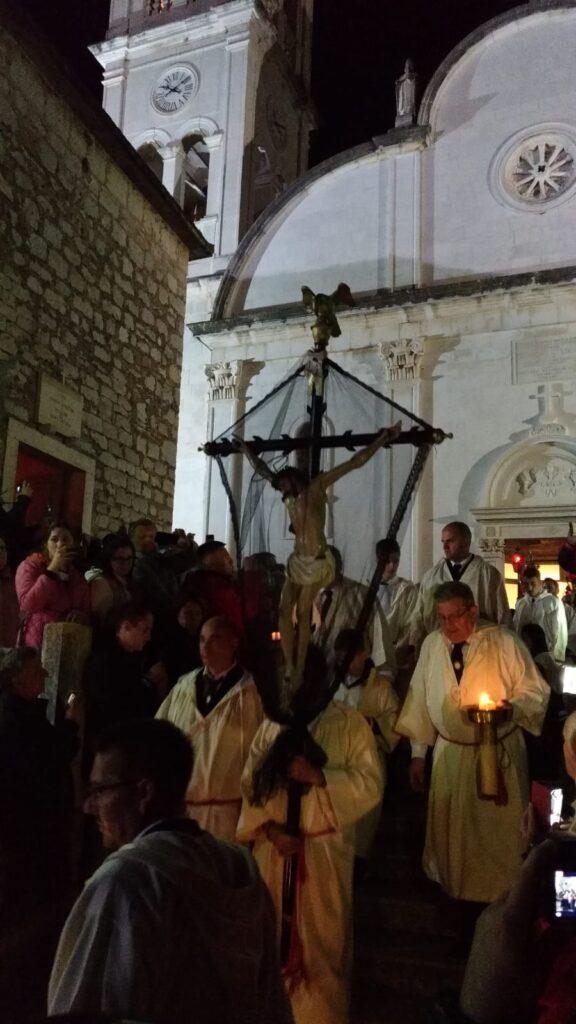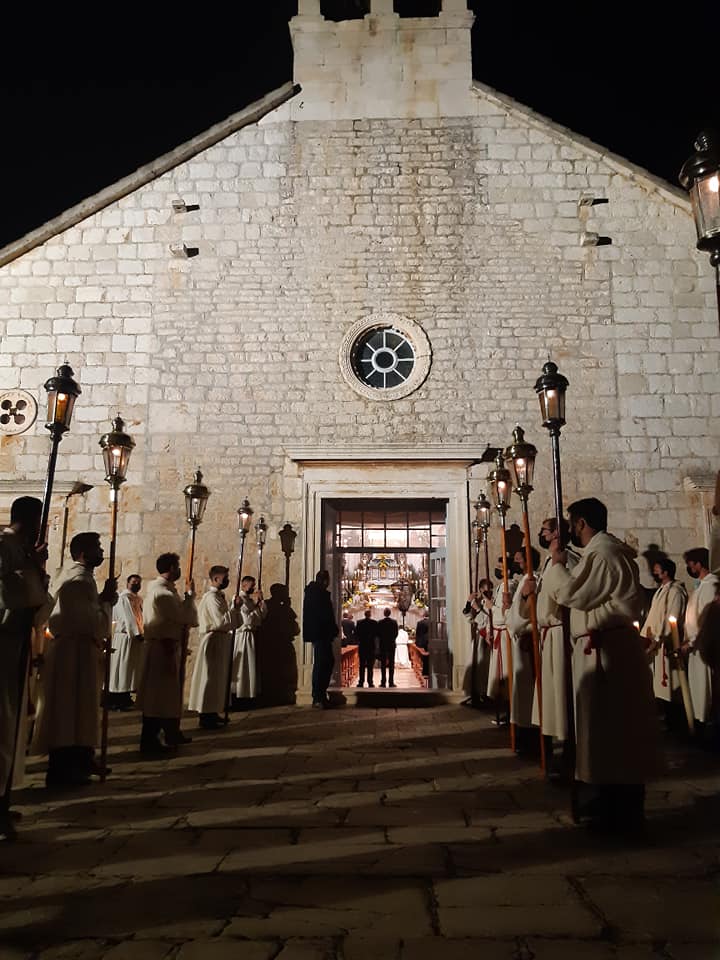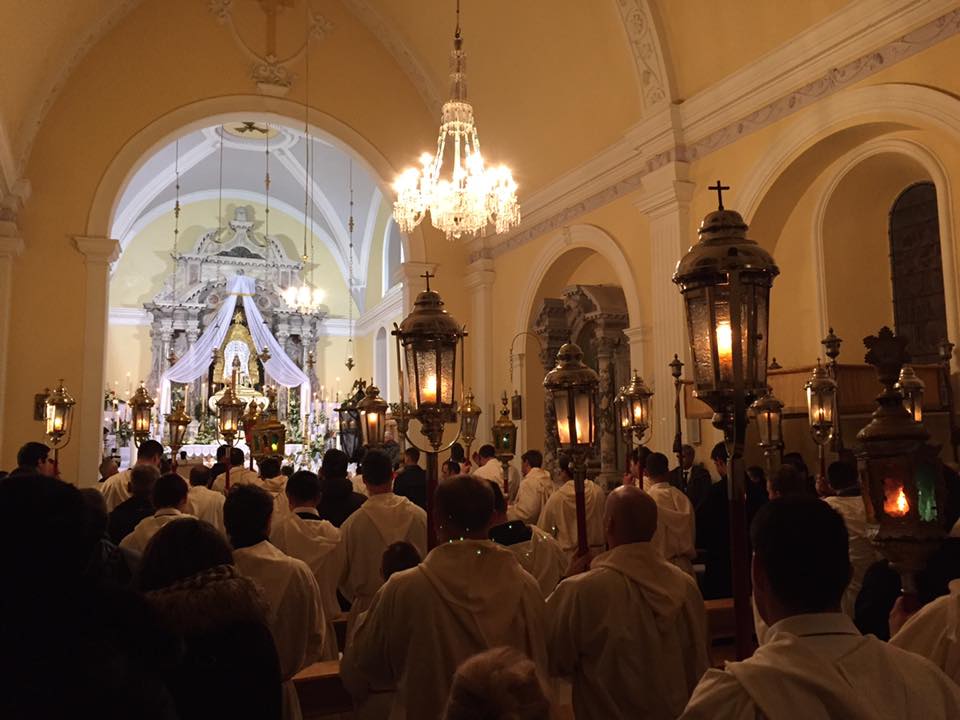Δεν υπάρχει τίποτα πιο έντονα, βαθιά και ενδόμυχα εγγεγραμμένο στον πυρήνα των κατοίκων του νησιού και στο βαθύτερο σημείο της ταυτότητάς μας από τη Μεγάλη Εβδομάδα, ειδικά η περιφορά που ονομάζεται«Za križen»” (Following the Cross). Actually, there are six separate processions that visit the six villages in the inland of the island – Jelsa, Pitve, Vrisnik, Svirče, Vrbanj and Vrboska.

The processions depart on Holy Thursday evening around 10 pm and returns to its starting point on Good Friday morning just after sunrise (between 6:30 and 7 am). The pilgrims and those who participate in the procession walk about 20 kilometres. At the head of the procession is a cross-bearer, a man who usually carries a cross weighing up to 18 kilograms. The cross-bearer vowed to bear the cross and he usually does not reveal publicly the reason why he is carrying it. Only his immediate family knows his vow.
In the recent past, i.e. before the Second World War, the cross-bearers applied to carry the cross mainly on Palm Sunday or the names of those interested in bearing the cross in the current year would be drawn in a kind of lottery. The votes would be cast and counted. The cross-bearer is accompanied by men from the family (father, brothers, sons, nephews, uncles and uncles) who accompany him dressed in a black suits. Additionally, he is followed by singers of Our Lady of Weeping and other believers.
This procession is very old and has existed for half a millennium. The proof of this is the mystical and very impressive chant of Our Lady’s weeping. The cross-bearer himself chooses five to six singers (their name is kantaduri and odgovoroči) who sing this special melody in each church. The origin of this chant of which is currently unknown. It is very unusual, almost spooky and reminiscent of Byzantine or even Islamic chants, which is the evidence of its old age. The singers chant two verses of the text very long and in a painful manner, so that the singing itself lasts more than five minutes. The texts also vary from place to place, although the template is the same.

The first mentioning of the procession dates back in the middle of the 17th century. According to this information, the procession took place between two places and started on Good Friday before dawn, between 3 and 4 o’clock. It is presumed that the procession has existed for less than two centuries in its current form.
More specific and concrete data about the procession are those from the recent past, i.e. from the last, 20th century. The oldest known cross- bearer so far carried a cross for Vrisnik in 1934, when he was 83, and the youngest was Svetko Marjan from Pitve, who carried a cross in 1953 being less than 14 years old at that time. The procession on the island of Hvar did not take place only during World War II, 1944, due to German occupation and the ban, but it was held far away, in the wilderness of the desert at the Allied camp El-Shatt in Egypt, where tens of thousands of people ended up who fled Dalmatia and the islands. Unlike the Hvar procession, the procession there lasted only three hours, followed by a sandstorm, but it made a strong impression on all present.

The preparations that the cross-bearer and his family go through throughout Lent (a month and a half) continue after the procession on the holiest night of the island of Hvar. Only in the place of Pitve, the participants in the procession gather for jutrina – refreshments with fish and other meatless dishes before resting after the exhaustive night walk. Usually on Easter Monday, the cross-bearer gathers all male (!) participants and helpers, friends and relatives for obid od križa (the Cross Meal). Women, even those closest to the cross-bearer, are not allowed to participate or sit at the table.
Despite this strong patriarchal role, obid od križa is an opportunity not only for refreshment and gathering, but also for the peaceful resolution of conflicts, disagreements, and disputes. It is also a call for unity, togetherness, and peace. The Holy Week has a special meaning for the inhabitants of Hvar. It awakens a special state of mind and spirit. That is why it is not surprising that the question the youngest ask every year is not “When is the Easter?” but “When do we follow the Cross?”
Zorka Bibić

